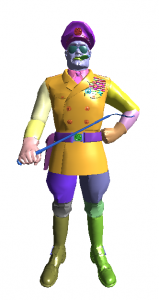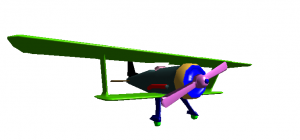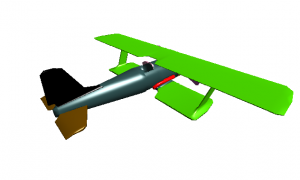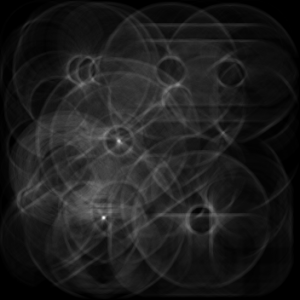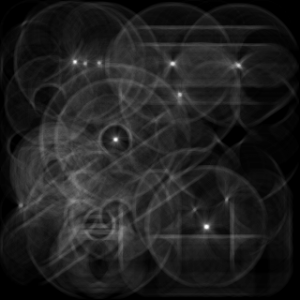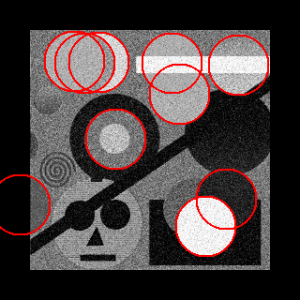This is one of those projects that seems much cooler to the maker than the observer. Here I have a biplane. What makes it special is that it was rendered using Carson Fenimore’s 3D renderer. If you have never heard of it, that’s ok – that probably won’t change, even after I finalize things with Pixar. It will probably remain anonymous, just as my stock and pay on the deal will be kept secret, leaving me superficially the same, as always, a humble man unwilling to brag.
This renderer was implemented entirely in c++ under Mac OS X and makes use of no external libraries, other than the STL for data containers and OpenGL for drawing 2D points (really 3D points with a Z value of 0). This means this renderer does the following:
- Polygon rasterization – quads and triangles
- Z Buffering – using patented hidden secret technology
- Geometric transformations (scale, translate, rotate)
- Arbitrary view (camera can be anywhere; specify view angle along with up, look at, and look from vectors
- Phong shading
The lesson I learned from this is: Don’t be deceived: simple things are often not easy to do. This was not easy to implement – there’s no “cookie-cutter” way to do your own renderer, especially if you have a weak background in linear algebra.
Apple – Notice the Shiny spot thanks to Mr. Phong

Bike
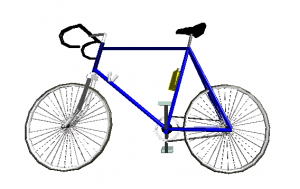
General – Very large and complex model
